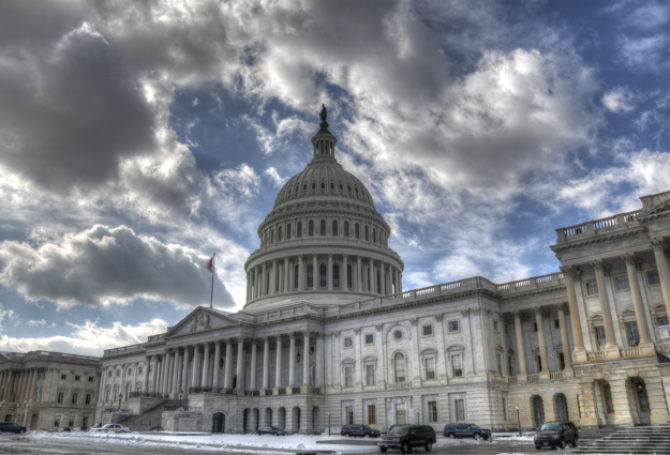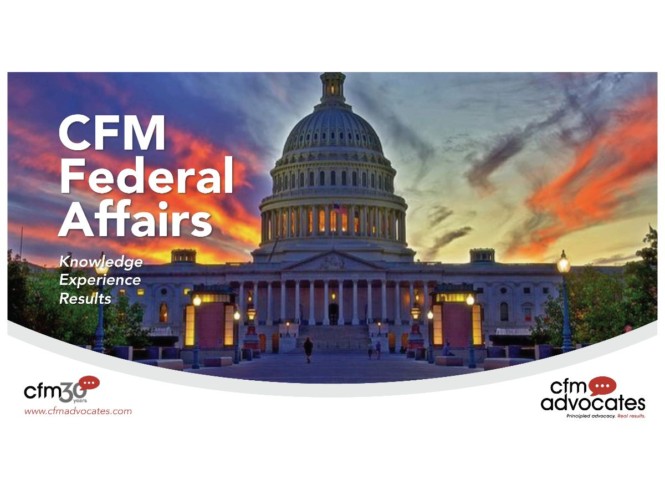
Congress increased federal debt limit while hope dims for a Senate vote on the Build Back Better Act by Christmas. Lawmakers also approved a huge defense bill as the Federal Reserve signals steps to curb inflation and redistricting reduces the number of competitive congressional districts.
On party-line votes, Democrats in the Senate and House approved legislation raising the statutory federal debt limit by $2.5 trillion, the largest increase in history and exceeding the $2.1 trillion hike approved in 2011. The debt limit now will be $31.4 trillion, which is expected to be sufficient until after the 2022 general election.
Despite partisan rhetoric about why the debt limit increase is needed, Senate Majority Leader Chuck Schumer and Senate Minority Leader Mitch McConnell worked behind the scenes on a temporary reprieve from a filibuster. The reprieve was added to separate legislation with bipartisan support that delayed automatic cuts in sensitive programs such as Medicare and farm supports. Part of the deal was Republican insistence that Democrats approve a dollar figure debt ceiling increase, not just a future date. The Senate vote to pass the debt ceiling increase was 50-49.
Democrats could have added a debt ceiling increase to a budget reconciliation measure pending in the Senate. However, the filibuster-proof budget reconciliation process is being used to enact President Biden’s Build Back Better proposal, which has passed the House, but is stuck in the Senate because two of the 50 Senate Democrats haven’t agreed to support the $2.2 trilion version approved by House Democrats or Senate amendments.
Schumer had targeted Senate passage of a version of the budget reconciliation measure before lawmakers leave DC for the holidays. That hope has dimmed as West Virginia Senator Joe Manchin continues to express reservations about the size of package and some of its provisions such as paid family leave. Senate Democrats in nine of the 12 committees with jurisdiction over parts of the sprawling reconciliation measure have produced their relevant text. Manchin chairs Senate Energy and Natural Resources, one of three committees that hasn’t delivered its sections.
Procedural reviews also have slowed progress. Formal bipartisan arguments before the Senate Parliamentarian have not occurred on provisions related to temporary work permits and deportation protection for undocumented immigrants. Depending on what happens the rest of this week, Senate Democrats hope to bring budget reconciliation to the Senate floor as early as Monday, December 20, which leaves little wiggle room for passage before Christmas.
The Senate did manage to approve, on an 89-10 vote, the $768 billion Defense Authorization Act. The measure contains $25 billion more in defense spending than Biden requested, though Biden is expected to sign the bill. Authorization bills in Congress are followed by appropriations.
Senate passage came after an earlier partisan stalemate centered on how to address challenges posed by China and Russia. The version headed to Biden’s desk boosts weapon purchases and R&D to counter Chinese and Russian threats. It also authorizes 13 new warships, 85 F-35 fighter jets, 17 F-15EX jets and 12 Super Hornet fighter jets, all exceeding Pentagon requests. Troops will receive a 2.7 percent pay increase.
Faced with the Senate stalemate, House Democrats scrambled to patch together a bipartisan compromise, which included scrapping provisions to require women to register for the military draft and to create a Pentagon office to weed out political extremists in the military ranks. The final version does overhaul the military justice system, authorizing special prosecutors outside the military chain of command to pursue sex crimes, kidnapping, murder and manslaughter and prevents states from using private funding to deploy National Guard personnel to other states.
As inflation bubbles to the top of voter concerns, the Federal Reserve signaled this week it will wind down its purchase of bonds to stimulate the economy and look at incremental interest rate hikes in 2022. Fed economists project inflation next year to back off to 2.6 percent, which is lower than current inflation, but higher than the Fed’s 2.2 percent target. It also anticipates unemployment to drop to 3.5 percent, which is near full employment, according to economists.
Benchmark interest rates would go from near zero to 0.9 percent by the end of 2022, 1.6 percent in 2023 and 2.1 percent in 2024. “The economy no longer needs increasing amounts of policy support,” said Fed Chair Jerome Powell. “In my view, we are making rapid progress toward maximum employment.”
Swing congressional districts may become non-existent as improved technology allows state legislatures and redistricting commissions to draw razor-sharp lines that protect incumbents or make it virtually impossible for one party’s candidates ever to win.
The economy no longer needs increasing amounts of policy support. In my view, we are making rapid progress toward maximum employment.
Twenty states have completed congressional redistricting, including Oregon and Washington. Regardless of the process, there is pressure to preserve political advantage. Five of Oregon’s six congressional districts, including the new Sixth District, have Democratic voter registration edges, though the Fifth District is considered competitive. Seven of Washington’s 10 redrawn congressional districts have Democratic voter registration edges.
The stakes are high heading into the 2022 midterm elections that will determine whether Republicans retake control of the House and Senate of Democrats cling to their slim majorities.
Gerrymandering political districts is not new, but elimination of competitive districts is a new twist. Political data firms have mounds of data on voting history, political activity, language, ethnicity and religious affiliation that legislatures or commissions can use to pinpoint district lines, leaving little doubt who is likely to win a particular district. The Voting Rights Act and federal court rulings impose certain requirements, but they generally don’t prevent or discourage gerrymandering by both political parties.
In addition to technology advances, voters have increasingly voted with their feet. Political homogeneity is now common in urban, suburban and rural areas. That makes it easier to draw relatively compact districts with one-party advantage. One political observer notes that drawing a boundary around a community of interest has become easier because “shared political values” has become part of what community means.




